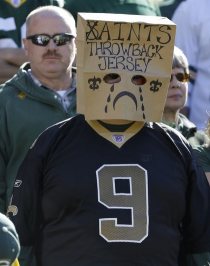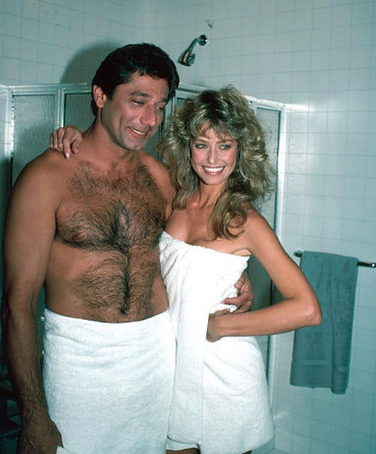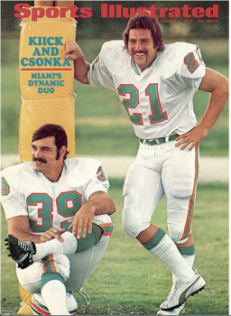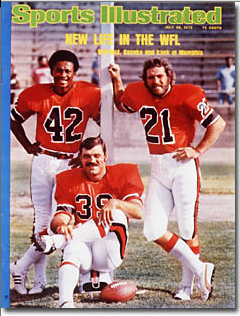Walter Payton (16,726) and Emmitt Smith (18,355) pushed the NFL career rushing record so high that, in the new millennium, 10,000 yards means you’re barely halfway to the top. When Jim Brown (12,312) was the all-time leader from 1961 to ’84, the milestone was a much bigger deal.
Consider: Through the ’95 season — the league’s 76th — just 10 backs had broken the 10,000 barrier. Only one isn’t in the Hall of Fame (and if you’d seen him as a rookie, when he rushed for 1,605 electric yards, you would have sworn he was a shoo-in).
10,000-YARD RUSHERS THROUGH 1995
[table]
Yards,Running Back,Team(s),Years,Hall of Fame?
16\,726,Walter Payton,Bears,1975-87,Yes*
13\,259,Eric Dickerson,Rams\, Colts\, 2 others,1983-93,Yes*
12\,739,Tony Dorsett,Cowboys\, Broncos,1977-88,Yes*
12\,312,Jim Brown,Browns,1957-65,Yes*
12\,120,Franco Harris,Steelers\, Seahawks,1972-84,Yes*
11\,352,John Riggins,Jets\, Redskins,1971-85,Yes
11\,236,O.J. Simpson,Bills\, 49ers,1969-79,Yes*
10\,908,Marcus Allen,Raiders\, Chiefs,1982-95,Yes*
10\,273,Ottis Anderson,Cardinals\, Giants,1979-92,No
10\,172,Barry Sanders,Lions,1989-95,Yes*
[/table]
*first year of eligibility
Note that eight of the 10 were elected to the Hall in their first year of eligibility (and Riggins made it in his second).
Since then, 19 more backs have joined the 10,000 Club — including the 49ers’ Frank Gore on Sunday against the Cowboys — which brings the membership to 29. It’s not so exclusive anymore, and that’s reflected in the fact that just six of those 19 are either in Canton or total locks for the place once they’re eligible. The breakdown:
● Already enshrined (4): Emmitt Smith (18,355), Curtis Martin (14,101), Marshall Faulk (12,279), Thurman Thomas (12,074).
● Destined to be enshrined (2): LaDainian Tomlinson (13,684), Adrian Peterson (10,190).
● Has been a finalist but hasn’t been voted in (1): Jerome Bettis (13,662).
● Maybe someday (1): Edgerrin James (12,246).
● Little to no chance, unless the Veterans Committee champions their cause (11): Fred Taylor (11,695), Corey Dillon (11,241), Warrick Dunn (10,967), Steven Jackson (10,730), Ricky Watters (10,643), Jamal Lewis (10,607), Thomas Jones (10,591), Tiki Barber (10,449), Eddie George (10,441), Frank Gore (10,030), Ricky Williams (10,009).
(If it were up to me, I’d give serious consideration to Barber. He’s 10th all time among backs in yards from scrimmage with 15,632 and also did some returning. But I don’t think the selectors are so inclined.)
As for Gore, he’s had a terrific career with seven 1,000-yard seasons and five Pro Bowls, but he’s really had only one monster year — 2006, when he rushed for 1,695 yards and gained 2,180 from scrimmage. None of his other seasons have come within 600 yards of that second figure (best: 1,538). Maybe he’ll have enough staying power put up Undeniable Numbers, but it doesn’t look like it.
At least he made it to 10,000, though, which may not be as rare as it once was but can still prove elusive to even the best backs. Earl Campbell (9,407), for instance, broke down before he got there — which didn’t, of course, keep him out of the Hall. And in recent years, Clinton Portis (an agonizingly close 9,923) and Shaun Alexander (9,453) have fallen short
It’s still a remarkable feat of endurance, never mind talent, whether it leads to Canton or not. Those are large men, after all, who are hitting you, and the ground isn’t exactly a mattress.




